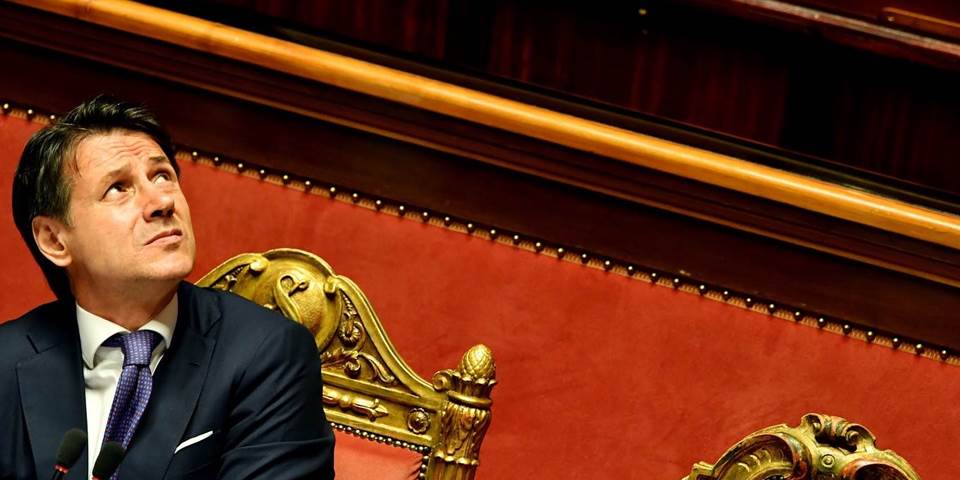When Populism Comes Home to Roost
Federico Fubini

ROME – Debates about the euro usually contain proposals for complex financial arrangements to build “resilience” against the next economic shock. Yet the shock that we are currently witnessing is political. Populists are making gains across the European Union, and Italy, a founding member, is now governed by a Euroskeptic coalition comprising the populist Five Star Movement (M5S) and nationalist League party.
As is always true when anti-establishment forces take power in a G7 or EU country, the question now is what comes next, and whether there is a route back to normalcy. In Italy’s case, it is too soon to tell. But in the meantime, we can reflect on what lessons there may be for Europeans as they attempt to contain the populist tide.
The main lesson is that European countries cannot face down today’s resurgence of populist nationalism and jingoism unless they cooperate. Unfortunately, the response to populist gains so far has been similar to the beggar-thy-neighbor response to protectionism in the 1930s, with each country trying to shift the problem on to others until it comes back to bite everyone.
In 2015, Italy’s then-prime minister, Matteo Renzi, convinced the European Commission that his government needed more “flexibility” for deficit spending in order to keep M5S at bay. This bending of EU budget rules predictably enraged the German public and fueled support for the far-right Alternative für Deutschland (AfD), now the main opposition party in the Bundestag. But, of course, popular anger is also what forced the German government to impose overly strict terms on Greece in 2015, thus inflaming a populist revolt in that country, too.
Likewise, populist anger in the Netherlands and Germany over bank rescues led to the enactment of strict anti-bailout legislation at the EU level after the 2008 financial crisis. But that legislation then prolonged Italy’s credit crunch, which, in turn, fueled populism there.
Then came the start of the refugee crisis, when Italy waved migrants through the Alps, essentially outsourcing the problem to France and Austria. That boosted the electoral prospects of the ultra-nationalist Freedom Party of Austria and the far-right National Front in France.
Eventually Austria and France sealed their own borders, setting the stage for the League to capitalize on public anger over immigration.
Of course, the roots of Italy’s populist turn are also domestic and historical. Owing to the failures of past governments, Italy has not experienced per capita GDP growth for two decades.
And productivity in the service sector – which is the least exposed to global competition – has been stagnant since the 1990s.
These are problems of Italy’s own making. After 1945, Italy reformed its political institutions but failed to make necessary changes to its economy. Though it had moved from dictatorship to democracy, the trappings of the fascist system lived on through a corporatist approach to market regulation and widespread government meddling in finance and industry. Some features of the old system eroded further after 1992, under the Maastricht Treaty, but others persisted.
For example, as a result of centralized wage bargaining, average private-sector compensation is just 6% lower in Italy’s South than in the North, even though the North’s productivity lead over the South is far greater. Under such conditions, there is no good reason to invest anywhere south of Rome, which explains why the region’s per capita GDP has fallen 30% below the eurozone average since 2001. Against this backdrop, it is little wonder that 47% of Southerners voted for M5S, whose proposal for a universal subsidy would well suit an economy held back by fascist-era corporatism.
Corporatism is simply incompatible with a monetary union. Yet it is difficult to reform because of the dependencies it creates. That is why multiple past governments failed to modernize the economy. After Silvio Berlusconi was forced out of the premiership in 2011, the technocrat Mario Monti did take some action, but in the run-up to the election, progress slowed to a halt.
Renzi, too, pursued limited reforms, but eventually fell prey to his own outsize ego.
But even with more effective leaders, Italy would have faced EU headwinds. The conservative fiscal response to the post-2008 recession, combined with the European Central Bank’s dithering before July 2012, led to excessive austerity, which wreaked havoc on the Italian middle class, pushing it toward populism. When Monti took office in November 2011, M5S and the Northern League (as it was then called) were polling below 10% combined; today, that figure is well above 50%.
Italy spent a fraction of what many other advanced economies marshaled (as a share of GDP) to bail out banks after the 2008 crisis. But its abrupt bank “bail-in” in 2015 forced small savers to take a loss, and boosted M5S just as its fortunes were flagging. In hindsight, ordinary Italians’ financial losses, coupled with the sentiment that the EU had left them to deal with the refugee crisis on their own, made the populist backlash all but inevitable.
Italy’s political situation shows how toxic Europe’s approach to populism has become. As mainstream politicians across the EU try to protect their flanks against domestic populist threats, the defenses they mount stoke populism in neighboring countries. The result is a domino effect, which has become the main threat to the future of the euro and the EU.
Mainstream politicians have failed to come together to combat populism because they are focused wholly on their own careers and the next election. But, sooner or later, they must realize that a beggar-thy-neighbor strategy will always come back to haunt them in the end.
That is why Italy, like Greece in 2015, could soon pose a threat to all of Europe.
Federico Fubini is a financial columnist and the author of Noi siamo la rivoluzione (We are the revolution).
0 comments:
Publicar un comentario